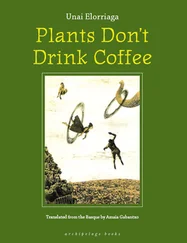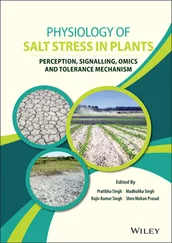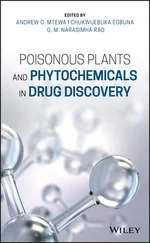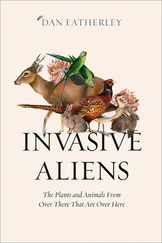Peganum Species2.64.1 Ethnopharmacological Properties and Phytochemistry 2.64.2 Culture Conditions References 2.65
Pelargonium Species2.65.1 Ethnopharmacological Properties and Phytochemistry 2.65.2 Culture Conditions References 2.66
Petroselinum Species2.66.1 Ethnopharmacological Properties and Phytochemistry 2.66.2 Culture Conditions References 2.67
Phyllanthus Species2.67.1 Ethnopharmacological Properties and Phytochemistry 2.67.2 Culture Conditions References 2.68
Plantago Species2.68.1 Ethnopharmacological Properties and Phytochemistry 2.68.2 Culture Conditions References 2.69
Plumbago Species2.69.1 Ethnopharmacological Properties and Phytochemistry 2.69.2 Culture Conditions References 2.70
Podophyllum Species2.70.1 Ethnopharmacological Properties and Phytochemistry 2.70.2 Culture Conditions References 2.71
Polygonum Species2.71.1 Ethnopharmacological Properties and Phytochemistry 2.71.2 Culture Conditions References 2.72
Primula Species2.72.1 Ethnopharmacological Properties and Phytochemistry 2.72.2 Culture Conditions References 2.73
Rauwolfia Species2.73.1 Ethnopharmacological Properties and Phytochemistry 2.73.2 Culture Conditions References 2.74
Rhamnus Species2.74.1 Ethnopharmacological Properties and Phytochemistry 2.74.2 Culture Conditions References 2.75
Rubia Species2.75.1 Ethnopharmacological Properties and Phytochemistry 2.75.2 Culture Conditions References 2.76
Rumex Species2.76.1 Ethnopharmacological Properties and Phytochemistry 2.76.2 Culture Conditions References 2.77
Salix Species2.77.1 Ethnopharmacological Properties and Phytochemistry 2.77.2 Culture Conditions References 2.78
Salvia Species2.78.1 Ethnopharmacological Properties and Phytochemistry 2.78.2 Culture Conditions References 2.79
Scrophularia Species2.79.1 Ethnopharmacological Properties and Phytochemistry 2.79.2 Culture Conditions References 2.80
Sida Species2.80.1 Ethnopharmacological Properties and Phytochemistry 2.80.2 Culture Conditions References 2.81
Solanum Species2.81.1 Ethnopharmacological Properties and Phytochemistry 2.81.2 Culture Conditions References 2.82
Stellaria Species2.82.1 Ethnopharmacological Properties and Phytochemistry 2.82.2 Culture Conditions References 2.83
Stevia Species2.83.1 Ethnopharmacological Properties and Phytochemistry 2.83.2 Culture Conditions References 2.84
Strobilanthes Species2.84.1 Ethnopharmacological Properties and Phytochemistry 2.84.2 Culture Conditions References 2.85
Symphytum Species2.85.1 Ethnopharmacological Properties and Phytochemistry 2.85.2 Culture Conditions References 2.86
Tabernaemontana Species2.86.1 Ethnopharmacological Properties and Phytochemistry 2.86.2 Culture Conditions References 2.87
Taxus Species2.87.1 Ethnopharmacological Properties and Phytochemistry 2.87.2 Culture Conditions References 2.88
Terminalia Species2.88.1 Ethnopharmacological Properties and Phytochemistry 2.88.2 Culture Conditions References 2.89
Thymus Species2.89.1 Ethnopharmacological Properties and Phytochemistry 2.89.2 Culture Conditions References 2.90
Tinospora Species2.90.1 Ethnopharmacological Properties and Phytochemistry 2.90.2 Culture Conditions References 2.91
Tribulus Species2.91.1 Ethnopharmacological Properties and Phytochemistry 2.91.2 Culture Conditions References 2.92
Trifolium Species2.92.1 Ethnopharmacological Properties and Phytochemistry 2.92.2 Culture Conditions References 2.93
Trigonella Species2.93.1 Ethnopharmacological Properties and Phytochemistry 2.93.2 Culture Conditions References 2.94
Turnera Species2.94.1 Ethnopharmacological Properties and Phytochemistry 2.94.2 Culture Conditions References 2.95
Valeriana Species2.95.1 Ethnopharmacological Properties and Phytochemistry 2.95.2 Culture Conditions References 2.96
Verbena Species2.96.1 Ethnopharmacological Properties and Phytochemistry 2.96.2 Culture Conditions References 2.97
Veronica Species2.97.1 Ethnopharmacological Properties and Phytochemistry 2.97.2 Culture Conditions References 2.98
Vitis Species2.98.1 Ethnopharmacological Properties and Phytochemistry 2.98.2 Culture Condition References 2.99
Withania Species2.99.1 Ethnopharmacological Properties and Phytochemistry 2.99.2 Culture Conditions References 2.100
Zingiber Species2.100.1 Ethnopharmacological Properties and Phytochemistry 2.100.2 Culture Conditions References
4 Part 3: Strategies of Secondary Metabolites Production 3.1 Biotransformation References 3.2 Culture Conditions References 3.3 Elicitation References 3.4 Feeding of Precursors References 3.5 Genetic Transformation References 3.6 Hairy Root Culture References 3.7 Immobilization References 3.8 Light References 3.9 Mutagenesis References 3.10 Organ Culture References 3.11 Oxygenation References 3.12 pH References 3.13 Product Secretion References 3.14 Secondary Metabolites Production by Endophytic Interaction References 3.15 Selection of High-Yielding Cell Lines References 3.16 Temperature References
5 Part 4: Conclusions
6 Index
7 End User License Agreement
1 Cover
2 Table of Contents
3 Begin Reading
1 iii
2 iv
3 1
4 2
5 3
6 4
7 5
8 6
9 7
10 8
11 9
12 10
13 11
14 12
15 13
16 14
17 15
18 16
19 17
20 18
21 19
22 20
23 21
24 22
25 23
26 24
27 25
28 26
29 27
30 28
31 29
32 30
33 31
34 32
35 33
36 34
37 35
38 36
39 37
40 38
41 39
42 40
43 41
44 42
45 43
46 44
47 45
48 46
49 47
50 48
51 49
52 50
53 51
54 52
55 53
56 54
57 55
58 56
59 57
60 58
61 59
62 60
63 61
64 62
65 63
66 64
67 65
68 66
69 67
70 68
71 69
72 70
73 71
74 72
75 73
76 74
77 75
78 76
79 77
80 78
81 79
82 80
83 81
84 82
85 83
86 84
87 85
88 86
89 87
90 88
91 89
92 90
93 91
94 92
95 93
96 94
97 95
98 96
99 97
100 98
101 99
102 100
103 101
104 102
105 103
106 104
107 105
108 106
109 107
110 108
111 109
112 110
113 111
114 112
115 113
116 114
117 115
118 116
119 117
120 118
121 119
122 120
123 121
124 122
125 123
126 124
127 125
128 126
129 127
130 128
131 129
132 130
133 131
134 132
135 133
136 134
137 135
138 136
139 137
140 138
141 139
142 140
143 141
144 142
145 143
146 144
147 145
148 146
149 147
150 148
151 149
152 150
153 151
154 152
155 153
156 154
157 155
158 156
159 157
160 158
161 159
162 160
163 161
164 162
165 163
166 164
167 165
168 166
169 167
170 168
171 169
172 170
173 171
174 172
175 173
176 174
177 175
178 176
179 177
180 178
181 179
182 180
183 181
184 182
185 183
186 184
187 185
188 186
189 187
190 188
191 189
192 190
193 191
194 192
195 193
196 194
197 195
Читать дальше












